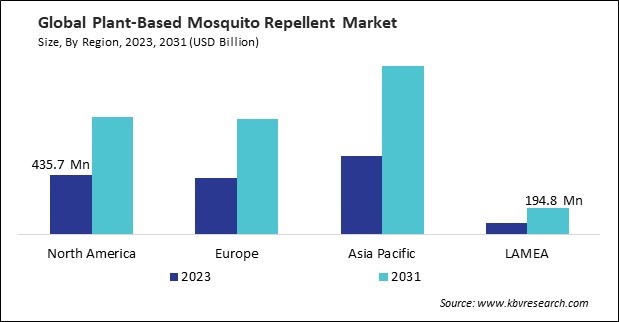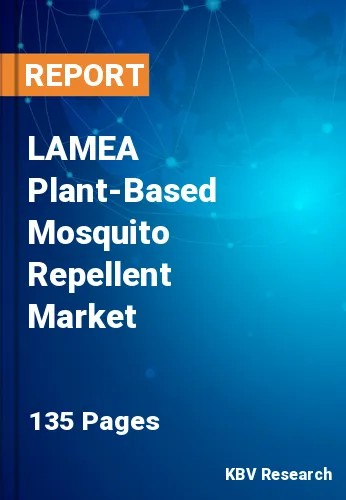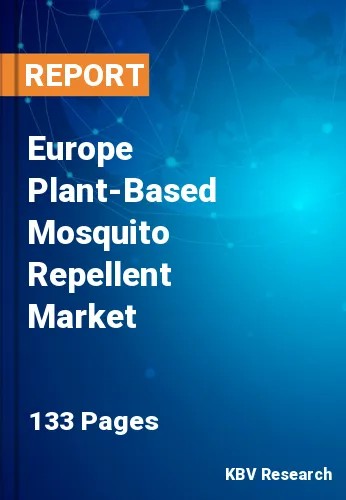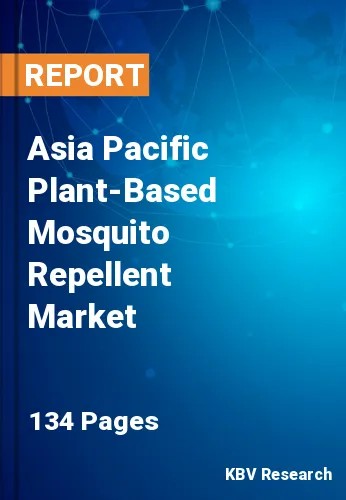The Plant-Based Mosquito Repellent Market is Predict to reach USD 3.1 Billion by 2031, at a CAGR of 9.8%
Special Offering :
Industry Insights | Market Trends | Highest number of Tables | 24/7 Analyst Support
Plant-Based Mosquito Repellent Market Growth, Trends and Report Highlights
According to a new report, published by KBV research, The Global Plant-based Mosquito Repellent Market size is expected to reach $3.1 billion by 2031, rising at a market growth of 9.8% CAGR during the forecast period.
The Household segment is leading the Global Plant-Based Mosquito Repellent Market by End-Use in 2023; thereby, achieving a market value of $1.6 billion by 2031. The primary driver for this segment is the increasing adoption of plant-based repellents by families seeking safe, non-toxic alternatives to protect their homes from mosquitoes. Consequently, households are increasingly selecting plant-based products that are gentle on the skin and appropriate for all age groups, including infants and the elderly, in response to the increasing awareness of the potential health risks associated with chemical repellents.

The Lotions & Creams segment is anticipating a CAGR of 9.6% during (2024 - 2031). Lotions and creams are preferred by consumers looking for direct and lasting skin protection against mosquitoes. Their popularity is especially notable among individuals who need consistent, long-duration coverage, such as families with young children and outdoor enthusiasts. Additionally, the demand for plant-based lotions and cosmetics has increased because of the increasing recognition of the health benefits of natural ingredients in personal care products. These products are a safer alternative to chemical-based repellents.
The Adults segment is generating the maximum revenue in the Global Plant-Based Mosquito Repellent Market by Age Group in 2023, thereby, achieving a market value of $1.5 billion by 2031. This can be attributed to the increasing health awareness among adults about the harmful effects of chemical-based repellents and the growing preference for natural and eco-friendly products. Adults are more likely to use plant-based repellents to protect themselves, especially when engaging in outdoor activities such as gardening, hiking, or traveling to areas with prevalent mosquito-borne diseases.
The Online Stores segment is registering a CAGR of 9.6% during (2024 - 2031). The expanding popularity of e-commerce among consumers, which is due to the convenience of purchasing from home and the availability of a diverse selection of products, is a contributing factor to the growth of this segment. Online platforms allow consumers to access detailed product information, read reviews, and compare brands before purchasing.
Full Report: https://www.kbvresearch.com/plant-based-mosquito-repellent-market/
The Asia Pacific region dominated the Global Plant-Based Mosquito Repellent Market by Region in 2023, and would continue to be a dominant market till 2031; thereby, achieving a market value of $195.8 million by 2031. The North America region is experiencing a CAGR of 9.1% during (2024 - 2031). Additionally, The Europe region would exhibit a CAGR of 9.6% during (2024 - 2031).
List of Key Companies Profiled
- S.C. Johnson & Son, Inc.
- Reckitt Benckiser Group PLC
- Henkel AG & Company, KGaA
- Spectrum Brands Holdings, Inc.
- Johnson & Johnson Services, Inc. (Johnson & Johnson)
- Dabur India Ltd.
- Natura & Co Holding SA
- 3M Company
- Godrej Consumer Products Ltd. (Godrej Group)
- Himalaya Wellness Company (Himalaya Global Holdings Ltd.)
Plant-Based Mosquito Repellent Market Report Segmentation
By End-Use
- Household
- Commercial
- Other End-Use
By Age Group
- Adults
- Children
- Other Age Group
By Product Type
- Sprays & Aerosols
- Lotions & Creams
- Candles & Coils
- Other Product Type
By Distribution Channel
- Hypermarkets & Supermarkets
- Online Stores
- Independent Stores
- Other Distribution Channel
By Geography
- North America
- US
- Canada
- Mexico
- Rest of North America
- Europe
- Germany
- UK
- France
- Russia
- Spain
- Italy
- Rest of Europe
- Asia Pacific
- China
- Japan
- India
- South Korea
- Singapore
- Malaysia
- Rest of Asia Pacific
- LAMEA
- Brazil
- Argentina
- UAE
- Saudi Arabia
- South Africa
- Nigeria
- Rest of LAMEA
Related Reports:



